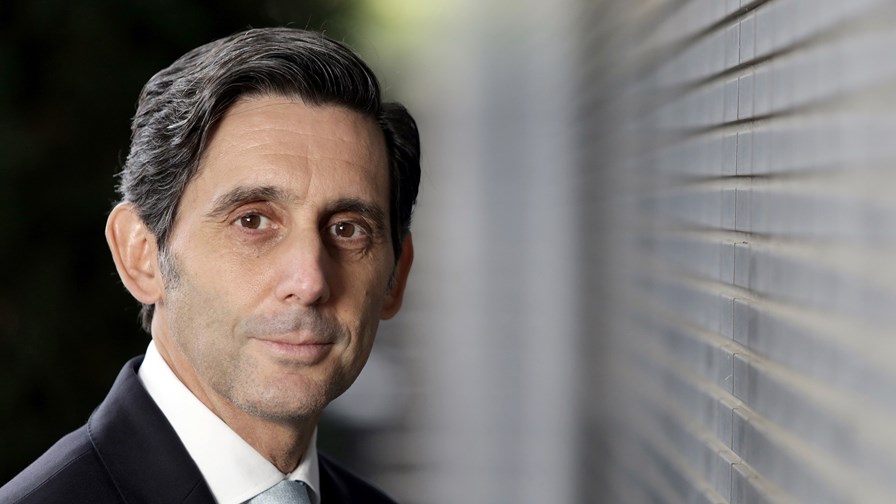
via Telefonica
- Five-point plan will see telco focus more on Spain, UK, Germany and Brazil
- Two new units have been created – Tech and Infra – that will rev up its growth engines
- Look out for layoffs too, as Telefonica's head office adapts to its new structure
Telefonica looks about ready to leave Latin America – with the exception of Brazil – and retreat to Europe. It's part of a strategic overhaul that will also see the telco put extra focus on monetising infrastructure and becoming a leaner, more agile organisation.
In a letter addressing stakeholders as "friends", Telefonica chairman and CEO José María Álvarez-Pallete established a new benchmark for telco navel-gazing, before setting out a five-point plan to stimulate growth, improve efficiency and, as he put it, "design a company for the next 100 years."
We'll spare you all the times-they-are-a-changin' waffle, and cut to the chase:
1. Telefonica is going to focus on Spain, Brazil, the UK and Germany.
Álvarez-Pallete says these are large markets with growth potential, "where our scale and leadership allow us to be more ambitious."
In short: money. Lots and lots of money. In 2018, these four markets accounted for more than 82 percent of Telefonica Group's operating income before depreciation and amortisation (OIBDA), and almost 76 percent of revenue. In 2017, those percentages stood at 74 percent for revenue, and almost 78 percent of OIBDA. It is clear then that Telefonica's strength is concentrated in these four markets.
Which brings us onto the next point...
2. Spinning off the Hispanoamérica operations into an operationally autonomous unit, and placing it under review.
If it wasn't already clear from the offloading of its various Central American operations to America Movil and Millicom respectively earlier this year, Telefonica has run out of road in Latin America, with the exception of Brazil, of course.
While Telefonica's LatAm-excluding-Brazil customer base is stable at just over 130 million, 2018 revenue was down 14.3 percent on 2017, while OIBDA fell 29 percent. Its options for financial growth then are:
Migrating customers onto higher-end services. This is difficult though, because it requires heavy investment in new, more advanced networks, as well as on content. It is hard to justify this when markets are competitive. Plus, unfavourable economic conditions in some of these countries means consumers are more inclined to be careful with their money.
The other obvious growth avenue is via acquisition, but with investors keeping a close watch on Telefonica's overall debt pile, that probably isn't a realistic option either.
Álvarez-Pallete said spin-off and review of Hispanoamérica has "the dual objective of modulating our exposure to the region, while creating the conditions to maximise its value, both via growth, consolidation and potential corporate operations."
In the interests of efficiency – something that telcos love, so we keep being told – we can roll points three and four into one:
3+4. Focus on emerging IT trends and monetising infrastructure to drive growth.
Or to put it another way, revving up the growth engines.
Telefonica is launching Telefonica Tech, a new B2B segment that brings together its cybersecurity, IoT and big data, and cloud operations under a single umbrella.
"It will leverage the muscle and local reach of the commercial teams in each country to sell its services and aspires to export the value proposition to other countries in which we are not present, through alliances," explained .
It likely means we can expect cohesive branding and messaging for Telefonica Tech's offerings across its footprint, bringing it more into line with how the big hyperscalers go to market.
The other growth engine is infrastructure. Having dipped a toe into monetising towers and submarine cables through its Telxius unit, it emerged in September that Telefonica wanted to do more on this front over the next 12 months.
Álvarez-Pallete is not mucking about. The company will create a new unit, Telefonica Infra, to manage all of its infrastructure assets, including its 50.01 percent stake in Telxius.
"Telefonica Infra's ambition is to be one of the largest telecommunications infrastructure units in the world, ready to channel the traffic explosion, and it will allow us to exploit the value of a unique portfolio of assets and attract potential partners," Álvarez-Pallete said.
To put that into some kind of context, Europe's biggest towers company, Cellnex, has around 45,000 towers and generated revenues of €901 million in 2018, and adjusted EBITDA of €591 million. In comparison, Telefonica controls, either directly or indirectly, 68,000 towers.
Infra doesn't plan to stop at towers though. Its scope will include distributed antenna systems, greenfield fibre deployments, and data centres – including edge clouds. It's bold, but with so much focus now on getting ultrafast connectivity everywhere, and everything from network functions to data and applications being virtualised and hosted as close as possible to end users, it's clear that demand for infrastructure will be healthy, to put it mildly.
5. Telefonica wants to be a lean, mean organisation, which suggests layoffs are on the cards.
In a nutshell, Telefonica's corporate functions need to adapt to the company's new structure – the opcos, Telefonica Tech, and Telefonica Infra. Head office also wants to maximise synergies between all the different parts of the company in pursuit of efficiency and operational excellence. Expect any excess fat to be summarily trimmed.
"If we want to be simple, transparent and agile with customers, we must simplify ourselves first," as Álvarez-Pallete puts it.
There is a lot of work ahead then for Telefonica, and ultimately the success or otherwise of its strategic overhaul will be borne out by its financial and operational performance. Álvarez-Pallete seems to making all the right noises though, as far as investors are concerned: Telefonica's shares in Madrid jumped to €6.90 on Thursday morning from a close of €6.76 on Wednesday evening, when the plan was announced.
Email Newsletters
Sign up to receive TelecomTV's top news and videos, plus exclusive subscriber-only content direct to your inbox.




